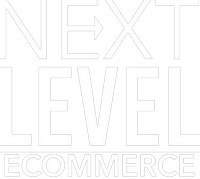In today’s rapidly evolving landscape, organizations often find themselves at a crossroads, seeking innovative ways to rise above challenges and flourish. The pursuit of transformative solutions has never been more crucial, as enterprises strive to outpace competitors and meet the ever-changing demands of their clients. A fresh perspective can illuminate avenues previously unconsidered, leading to remarkable advancements and growth.
By shifting focus and employing unconventional methods, leaders can foster an environment of creativity and collaboration. Breaking through traditional barriers not only ignites enthusiasm among team members but also attracts new opportunities. This journey encourages a reassessment of existing practices, prompting a reimagining of goals and aspirations.
Ultimately, embracing this progressive outlook allows organizations to tap into their core strengths, facilitating a profound journey towards excellence. As minds unite in pursuit of a common vision, remarkable transformations unfold, empowering entities to navigate the complexities of their respective industries.
Understanding the Great Escape Strategy
This approach revolves around the concept of breaking free from conventional methods that may hinder growth and innovation. It encourages exploration of alternative paths that can lead to significant improvement in performance and efficiency. The essence of this technique lies in redefining traditional frameworks to foster creativity and adaptability in various situations.
At its core, this method emphasizes the importance of assessing existing obstacles and identifying opportunities that may not be immediately apparent. By shifting perspectives and challenging norms, individuals and organizations can discover untapped resources and capabilities. The ultimate goal is to cultivate an environment where progressive ideas can thrive, ultimately leading to transformational change.
Implementing this model requires a proactive mindset and a willingness to experiment. Embracing flexibility is crucial, as it allows for the refinement of strategies based on real-time feedback and outcomes. By prioritizing innovation over rigidity, one can navigate complexities and facilitate sustainable growth in a dynamic landscape.
Benefits of Innovative Business Approaches
Exploring fresh methodologies in commerce can yield numerous advantages. Embracing creativity and originality allows for the identification of unique pathways that may lead to heightened efficiency and effectiveness. By venturing beyond traditional frameworks, organizations can cultivate an environment ripe for growth and transformation.
Enhanced Problem Solving: Innovative tactics encourage teams to think outside the box, leading to more effective solutions to challenges. This adaptability can be vital in a rapidly changing marketplace.
Increased Customer Engagement: By integrating novel ideas into products and services, companies can attract attention and foster loyalty among consumers. Unique offerings can differentiate a brand in a crowded field.
Improved Efficiency: Implementing cutting-edge techniques often streamlines processes, resulting in reduced operational costs and increased productivity. Innovation can lead to smarter resource management and technology use.
Stronger Competitive Position: Organizations that consistently adopt new approaches can maintain an edge over rivals. A commitment to innovation signals to the market that a company is forward-thinking and responsive to trends.
Attraction of Talent: A culture centered around innovative practices often attracts skilled professionals who seek dynamic work environments. Talented individuals are drawn to places where their ideas can thrive and contribute to meaningful change.
Overall, embracing innovative methodologies can transform not only how a company operates but also how it is perceived in the market, paving the way for long-term success.
Identifying Bottlenecks in Your Operations
Recognizing areas of inefficiency within an organization is essential for enhancing overall performance. Identifying these impediments allows leaders to focus their efforts on streamlining processes, minimizing delays, and improving productivity. Understanding where these issues lie can lead to smarter decision-making and better resource allocation.
To pinpoint operational bottlenecks, consider the following strategies:
- Process Mapping: Create a visual representation of workflows to identify stages that slow down progress.
- Data Analysis: Utilize performance metrics and key performance indicators (KPIs) to assess areas with the longest completion times.
- Employee Feedback: Engage with team members to gather insights on their experiences and obstacles faced in daily tasks.
- Customer Journey Evaluation: Analyze the customer experience to detect points where service delivery may be hindered.
- Regular Audits: Conduct periodic assessments of operations to uncover inefficiencies that may not be immediately obvious.
By systematically applying these techniques, organizations can gain valuable insights into their workflows, empowering them to address inefficiencies and enhance overall effectiveness.
Creative Solutions to Drive Growth
Innovative approaches to foster advancement are essential in today’s competitive landscape. Embracing fresh perspectives and imaginative methodologies can pave the way for new opportunities and success. By thinking outside the box, organizations can uncover unique avenues for expansion and sustainability.
Leveraging Technology
Incorporating cutting-edge technology not only streamlines operations but also enhances customer experiences. Utilizing data analytics can reveal trends and preferences, enabling informed decision-making. Moreover, automation can reduce manual tasks, allowing teams to focus on strategic initiatives that drive improvement.
Fostering Collaboration
Encouraging teamwork across different departments cultivates a culture of creativity. Brainstorming sessions can lead to groundbreaking ideas and solutions. By creating an inclusive environment where all voices are heard, organizations empower their workforce to contribute actively to innovative practices that propel growth.
Implementing Change for Lasting Impact
Creating sustainable transformation requires a thoughtful approach that engages all levels of an organization. Effective execution goes beyond mere adjustments; it seeks to instill a culture that embraces continuous improvement and encourages innovation. This paradigm shift is essential for enduring success and adaptation in a rapidly evolving environment.
Key Strategies for Effective Transformation
To achieve meaningful and lasting changes, several strategies can be employed:
| Strategy | Description |
|---|---|
| Engagement | Involve all team members in the change process to foster ownership and accountability. |
| Communication | Ensure transparent and ongoing dialogue to align expectations and mitigate resistance. |
| Training | Provide comprehensive training and resources to equip employees with necessary skills. |
| Feedback | Implement systems for regular feedback to make adjustments and celebrate successes. |
Measuring Impact of Changes
To gauge the efficacy of implemented changes, organizations must establish metrics that reflect both performance and employee satisfaction. These indicators can provide valuable insights into progress and highlight areas requiring further enhancement, ensuring that the transformation is not only effective but also impactful over time.
Measuring Success and Tracking Progress
Understanding achievements and monitoring advancements is crucial for any initiative. By establishing clear indicators of performance, one can assess the effectiveness of implemented actions and make well-informed adjustments as needed. This approach fosters a culture of continuous improvement and accountability, empowering teams to stay focused on their objectives.
Key Performance Indicators
Defining key performance indicators (KPIs) is essential for gauging effectiveness. These metrics allow organizations to evaluate progress toward goals, highlighting areas of success and pinpointing challenges. Selecting the right KPIs involves aligning them with overarching objectives, ensuring that they provide meaningful insights into various aspects of operations.
Regular Review and Adjustment
Establishing a routine for reviewing metrics is vital in maintaining momentum. Regular check-ins facilitate timely adjustments and clarify whether strategies are yielding desired outcomes. This iterative process encourages openness to change, enhancing overall performance and fostering resilience in a dynamic environment. Ongoing reflection and adaptation form the backbone of effective progress tracking and ultimately drive sustained success.
Q&A: Business great escape
How can the Better Business Bureau (BBB) help verify a company’s credibility in 2023 and 2024?
The BBB helps verify a company’s credibility by providing a BBB Business Profile, which includes the company’s rating, complaint history, and accreditation status. Customers can see BBB ratings to assess the trustworthiness of a service or business.
What does it mean for a business to be BBB accredited?
BBB accreditation means the business meets the BBB’s standards for trust, including ethical practices, transparency, and responsiveness to complaints. BBB-accredited businesses often display a BBB logo to show their commitment to exceptional service.
How can customers use the BBB website to affirm a business’s reliability?
Customers can use the BBB website to affirm a business’s reliability by checking its BBB rating, reviewing customer complaints, and verifying whether the company sought BBB accreditation. This helps ensure a positive transaction experience.
What types of businesses are often listed as BBB-accredited in the home leisure sector?
In the home leisure sector, BBB-accredited businesses often include hot tub dealers, pool retailers, sauna providers, patio furniture stores, and home theater seat companies. These businesses emphasize customer satisfaction and ethical practices.
What should customers consider when looking at complaint information on the BBB website?
When reviewing complaint information, customers should consider the nature of complaints, how the business responded, and whether the issues were resolved. The number of complaints is less important than how the business addressed them.
How does the BBB ensure the accuracy of the business details listed on its website?
The BBB website includes a disclaimer stating that while efforts are made to guarantee the accuracy of business details, the information is subject to change. Customers are encouraged to verify directly with the business.
What should customers know about BBB ratings and photos or videos of a business?
BBB ratings are based on factors like complaint resolution and business practices, but photos and videos on a BBB profile are uploaded by the business itself. Customers should consider both the rating and visual materials when evaluating a company.
Why is it important to review a company’s privacy policy before completing a transaction?
Reviewing a company’s privacy policy helps customers understand how their data will be used, stored, and shared. This is particularly important when dealing with businesses in sectors like outdoor furniture and pool retailing, where personal information may be required.
How can the BBB assist customers in resolving disputes with outdoor furniture retailers?
The BBB assists by providing a platform for filing complaints and offering mediation services. It helps customers and businesses reach a resolution, promoting fair practices in the outdoor furniture and home leisure industries.
Why does the BBB emphasize that it does not endorse any product or service?
As a matter of policy, the BBB does not endorse any product or service to maintain neutrality. Instead, it focuses on providing accurate reporting and complaint resolution to help customers make informed decisions.

